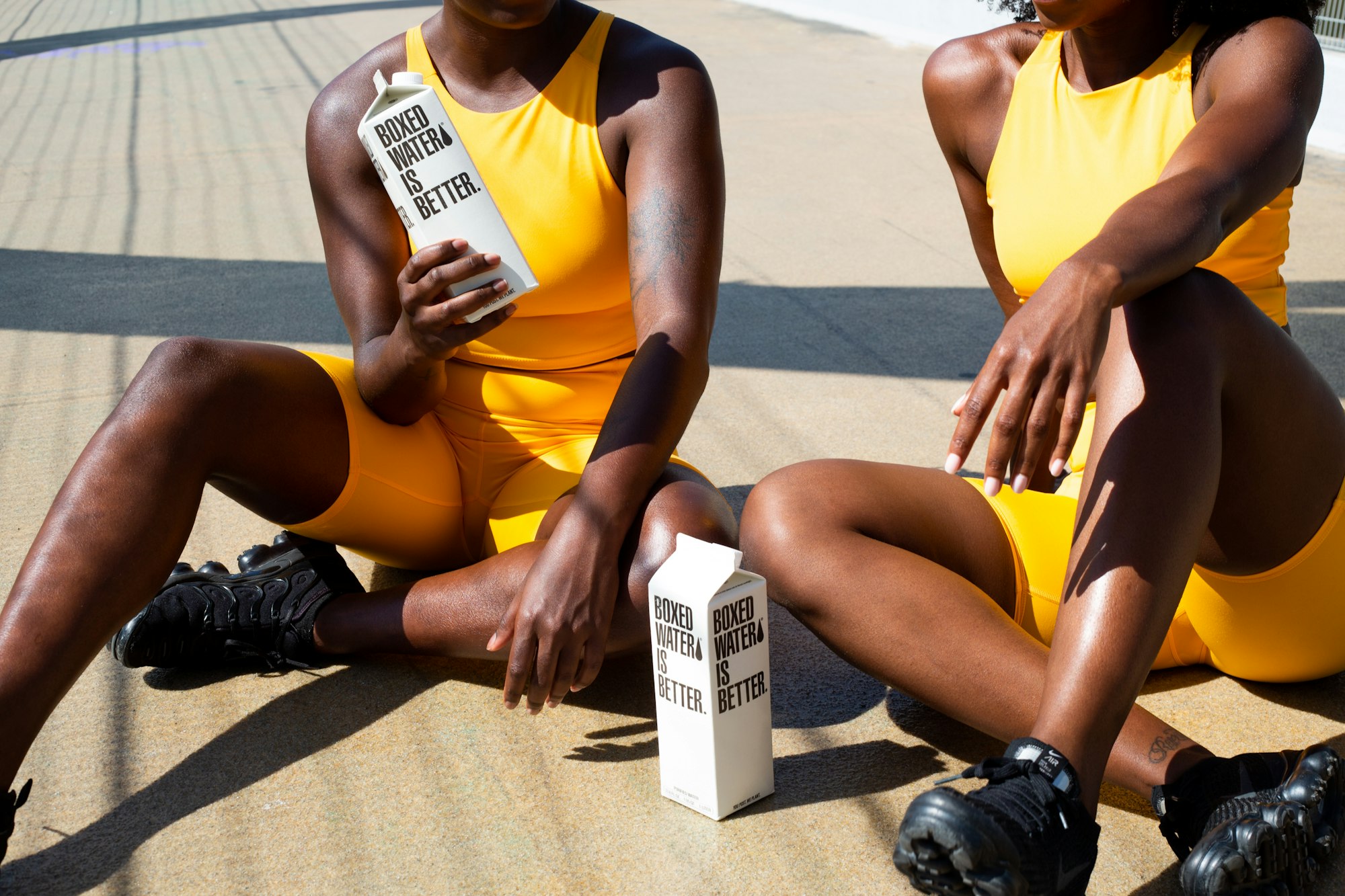What Are Brand Collaborations?
These partnerships between two or more brands have proven to be successful in reaching a wider audience, increasing engagement rates, and boosting market share.
By teaming up with their favorite brands, businesses can leverage the existing customer bases and social media profiles of their collaborators to attract new potential customers.
Whether it's a collaboration between a luxury fashion label like Louis Vuitton and a renowned artist, or a fast-food giant like Burger King teaming up with the Harry Potter franchise.
These partnerships create exciting products and relevant content that resonate with their target audience.
Successful collaborations are often seen between popular brands and content creators, influencers, and celebrities who already have millions of followers, allowing for a greater reach and impact.
Why Collaborate With Brands
Collaborating with brands can offer numerous benefits for businesses. One of the primary advantages is the ability to attract new customers.
By partnering with another brand that has a similar target audience, businesses can tap into the customer base of their collaborator and expose their products or services to a wider audience.
Brand collaborations can also generate powerful word of mouth. When two well-loved and respected brands come together, it creates a sense of excitement and curiosity among consumers.
Furthermore, collaborating with another brand allows businesses to share promotion costs.
By pooling resources and marketing efforts, both brands can reach a larger audience without incurring the full expense individually.
This can be particularly beneficial for smaller businesses with limited budgets.
Another advantage of brand collaborations is the boost in credibility it can provide. Partnering with a well-known and reputable brand can enhance the perceived value and trustworthiness of a business.
This can be especially useful for startups or lesser-known brands looking to establish themselves in the market.

Types Of Brand Collaborations
There are several types of brand collaborations that businesses can engage in to achieve their marketing goals.
One common type is a co-created product collaboration, where two or more brands work together to develop and launch a new product or service.
This type of collaboration allows each brand to leverage its unique strengths and expertise, resulting in a product that combines the best of both worlds.
Another type is sponsored collaboration, where a brand partners with an influencer or content creator to promote their products or services.
This type of collaboration is often seen on social media platforms, where influencers share their favorite products or create content around a brand's offerings.
Additionally, there are brand collaborations that involve events or experiences, where brands come together to host a joint event or create a memorable experience for their customers.
These collaborations can help brands tap into new customer bases and create a lasting impression.
Co-Branding
Co-branding is a strategic marketing and advertising partnership between two brands that allows them to leverage each other's strengths to create a successful collaboration.
These partnerships aim to generate brand awareness, increase customer engagement, and ultimately drive sales.
Co-branding works on the principle that the success of one brand benefits the partner brand as well.
Successful co-branding partnerships often involve brands that have complementary products or target similar customer bases.
Take, for example, the collaboration between Louis Vuitton and various luxury brands.
By partnering with brands like Supreme and BMW, Louis Vuitton was able to tap into a new customer base and create a buzz around their products.
Value for both audiences is crucial in co-branding. Each brand brings something unique to the table, whether it's its expertise, design aesthetics, or customer loyalty.
The collaboration should offer something exciting and relevant to both sets of customers.
Burger King's collaboration with Harry Potter, for instance, attracted fans of the book series and customers of the fast-food chain by offering exclusive merchandise and experiences.
In a successful co-branding partnership, both brands benefit from increased visibility, expanded market share, and access to each other's customer base.

Joint Ventures
Joint Ventures in brand collaborations involve two or more brands coming together to create a new entity or project that is separate from their businesses.
This approach allows for a deeper level of collaboration and integration between the brands, resulting in a unified front and joint presence in the market.
A notable example of a Joint Venture in brand collaboration is the partnership between Pat McGrath and Karl Lagerfeld.
These two iconic figures in the fashion industry joined forces to create an exclusive line of makeup products that combined McGrath's expertise in cosmetics with Lagerfeld's unique design aesthetic.
This collaboration not only brought together their respective fan bases but also showcased their shared passion for innovation and creativity.
One key difference between Joint Ventures and other types of brand collaborations is the level of commitment and investment involved.
With a Joint Venture, the brands fully commit to the success of the venture and often pool resources, expertise, and assets to achieve their common goals.
This level of collaboration allows for a more integrated marketing approach and the ability to leverage each other's strengths for maximum impact.
By combining forces, brands can tap into larger markets, expand their product offerings, and ultimately increase their market share.
However, Joint Ventures also come with challenges. Brands must navigate potential conflicts of interest, align their brand values and objectives, and effectively manage decision-making processes.
Additionally, there may be a risk of diluting the individual brand identities or creating confusion among consumers if the collaboration is not executed strategically.

Licensing Agreements
Licensing agreements play a crucial role in brand collaborations by allowing brands to grant permission to other companies or individuals to use their intellectual property, such as trademarks, logos, or copyrights.
These agreements enable brands to expand their reach and generate additional revenue streams through partnerships with other entities.
In a licensing agreement, the brand owner, known as the licensor, has a third party, known as the licensee, to use its intellectual property in exchange for royalties or fees.
This arrangement allows the licensee to leverage the reputation and recognition of the brand to market and sell products or services under the licensed brand name.
One example of a successful licensing agreement is the collaboration between Louis Vuitton and streetwear brand Supreme.
Louis Vuitton granted Supreme the right to use its iconic monogram pattern on a range of clothing and accessories.
This collaboration brought together the luxury fashion world with the bold and edgy streetwear scene, creating a high-demand collection that appealed to a wide audience.
Another notable example is the licensing agreement between Warner Bros. and the Harry Potter franchise. Warner Bros. has licensed the Harry Potter brand to various companies for products such as clothing, toys, and home goods.
This collaboration has allowed Warner Bros. to extend the reach and popularity of the Harry Potter brand, while licensees benefit from the association with a beloved and successful franchise.

Cross Promotions And Endorsements
Cross promotions and endorsements play a crucial role in brand collaborations, as they allow companies to leverage their respective reputations, customer bases, and brand loyalty to create a mutually beneficial partnership.
By joining forces, brands can amplify their reach and create a powerful impact in the market.
One effective strategy is co-marketing, where two or more brands come together to create a hybrid effort that promotes all parties involved.
This can be achieved through various means, such as product bundling or joint marketing campaigns. By combining their resources and expertise, brands can create a more compelling and enticing offering for their customers.
One great example of a successful cross-promotion is the collaboration between McDonald's and Beanie Babies.
McDonald's included these popular collectible toys in their Happy Meals, which not only increased the appeal of the meal but also drove traffic and loyalty to the fast-food chain.
Simultaneously, Beanie Babies gained widespread exposure and access to McDonald's extensive customer base, leading to increased sales and brand recognition.
Another notable endorsement partnership is between GoPro and Red Bull. These two brands joined forces to showcase the exhilarating experiences and adventures of extreme sports enthusiasts.
Through a series of co-branded content and events, both companies could tap into each other's loyal customer bases and strengthen their market presence.
This collaboration not only led to increased sales of GoPro cameras but also provided Red Bull with high-quality content for its audience.

Sponsorship Deals
Sponsorship deals play a vital role in brand collaborations, offering a range of opportunities to create effective and mutually beneficial partnerships.
There are different types of sponsorship deals that brands can use to enhance their collaborative efforts.
One type of sponsorship deal is financial sponsorship, where a brand provides monetary support to another brand or event.
This type of collaboration allows the sponsoring brand to align itself with a specific audience or event and gain valuable exposure.
The sponsored brand, on the other hand, benefits from financial assistance to support its activities or initiatives.
Another type is product sponsorship, where one brand provides its products or services to support another brand or event.
This allows the sponsored brand to access high-quality products or services at a reduced cost or even for free, while the sponsoring brand gains exposure and visibility for its offerings.
When brands leverage their strengths through sponsorship deals, it can lead to various advantages.
By aligning with a brand that has complementary strengths, each brand can tap into new customer bases and target audiences.
This allows them to reach a wider market and expand their reach.
Sponsorship deals also provide opportunities for brands to showcase their expertise and create relevant and captivating content.
For example, a fitness brand sponsoring a marathon can share workout tips and training programs to engage with the audience and establish itself as a credible and knowledgeable brand in the fitness industry.

Content Syndication
Content Syndication is a marketing strategy that involves the distribution of content created by brands across various platforms.
In the context of brand collaborations, Content Syndication allows brands to leverage the power of user-generated content to reach a wider audience and enhance their marketing efforts.
User-generated content is content that is created by consumers or fans of a brand and shared on social media platforms.
It can include photos, videos, reviews, testimonials, and other forms of content. This type of content is highly valuable as it is authentic, relatable, and can resonate with the target audience.
Brands can collaborate with content creators, influencers, or even their customers to generate user-generated content.
By encouraging their audience to create and share content related to their brand, products, or services, brands can tap into the creativity and passion of their customers.
Once the content is created, brands can ask for permission from the creators to syndicate their content for marketing purposes.
This involves obtaining consent and providing compensation to the creators, either through monetary payment, product discounts, or other incentives.
By compensating creators for their content, brands not only guarantee compliance with copyright laws but also establish a mutually beneficial relationship with their customers.
Content Syndication allows brands to showcase the genuine experiences and satisfaction of their customers, which can significantly enhance their marketing efforts.

Trending Brand Collaborations
These collaborative efforts allow brands to tap into new markets, leverage the strengths of other brands, and captivate a wider audience.
In recent years, we have seen successful brand collaborations that have captured the attention of consumers and generated significant buzz.
From Louis Vuitton partnering with pop culture icons like Harry Potter and Game of Thrones, to beauty brand Pat McGrath teaming up with celebrities like Kim Kardashian and Lebron James, collaborations have taken various forms across industries.
These partnerships not only provide unique and exciting products for customers but also create new opportunities for both brands to engage with their customer base and enhance their market share.
With the power of social media and influencer marketing platforms, brands can effectively harness the influence of content creators and influencers to promote their collaborations and create high-quality content that resonates with their target audience.
Whether it's a collaboration between two popular brands or a partnership between a brand and a micro-influencer, effective brand collaborations can help businesses expand their customer base, increase engagement rates, and have a lasting impact on their market presence.
Louis Vuitton x Supreme
One of the most successful brand collaborations in recent years was the partnership between luxury fashion house Louis Vuitton and streetwear brand Supreme.
This collaboration captured the attention of both fashion enthusiasts and streetwear fans, resulting in a highly sought-after collection.
Capitalizing on the growing trend of streetwear, Louis Vuitton tapped into the influence and popularity of Supreme to expand its appeal to a wider audience.
By merging high fashion with street style, Louis Vuitton could create a collection that resonated with millennial and Gen Z consumers.
The Louis Vuitton x Supreme collaboration had a significant impact on the brand's profits, with sales and demand skyrocketing during and after the collection's release.
The popularity of the joint collection led to long lines outside Louis Vuitton stores worldwide and products selling out almost instantly.
This collaboration between Louis Vuitton and Supreme not only showcased the power of successful collaborations but also demonstrated the value of tapping into popular trends and engaging with a new target audience.
The combination of Louis Vuitton's luxury status and Supreme's streetwear appeal proved to be a winning formula, resulting in increased market share and heightened brand visibility for both parties involved.
Harry Potter x Burger King
In a truly magical partnership, Harry Potter joined forces with Burger King to create an unforgettable brand collaboration.
This unique alliance between two iconic brands aimed to captivate their respective customer bases and take them on a gastronomic adventure.
The collaboration saw Burger King offering limited-edition Harry Potter-themed menu items, inspired by the enchanting world of Hogwarts.
From Butterbeer-flavored milkshakes to Bertie Bott's Every Flavor Beans milkshakes, Burger King aims to bring the magic of Harry Potter into their fast-food offerings.
One particularly significant move by Burger King was their decision to temporarily halt the sales of their signature Whopper burger for a day.
This bold move was in support of McDonald's charity campaign, where a part of the proceeds from every Big Mac sold that day went towards children battling cancer.
The campaign garnered immense recognition and admiration for Burger King, who put their rivalries aside to contribute to a cause greater than themselves.
The Harry Potter x Burger King collaboration brought several benefits to both brands. Firstly, it significantly increased awareness and engagement among their customer base.
The marriage of Harry Potter's beloved characters and Burger King's delicious fast-food fare created a buzz on social media, with fans and foodies alike sharing their excitement about the collaboration.
Moreover, this partnership showcased Burger King's commitment to social causes and its willingness to do the unexpected.
By supporting McDonald's charity campaign, Burger King demonstrated their values and highlighted their dedication to making a positive impact in society.
The Harry Potter x Burger King collaboration was a successful testament to the power of brand collaborations.
It not only delighted fans of both franchises but also generated widespread recognition and engagement, solidifying Burger King's position as a brand that dares to be different.

Pat McGrath x L’Oreal Paris Makeup
The brand collaboration between Pat McGrath and L’Oreal Paris Makeup was a highly successful venture in the cosmetics industry.
Pat McGrath, a renowned makeup artist and founder of their eponymous beauty brand, teamed up with L’Oreal Paris Makeup, a global leader in the beauty industry, to create a line of products that combined McGrath's artistic vision with the expertise of L’Oreal Paris.
The collaboration brought together Pat McGrath's creative genius and L’Oreal Paris Makeup's extensive resources and distribution channels.
The collection features a range of high-quality products, including vibrant eyeshadow palettes, bold lipsticks, and innovative face products. It was praised for its innovative formulas, diverse shade offerings, and stunning packaging.
This collaboration had a significant impact on the cosmetics industry. It showcased the power of collaboration between a renowned artist and a market-leading brand, setting a precedent for future partnerships in the industry.
The collaboration also allowed L’Oreal Paris Makeup to tap into Pat McGrath's dedicated fanbase and reach a wider audience.
Furthermore, this collaboration highlighted the importance of diversity and inclusivity in the beauty industry.
The collection offered a wide range of shades and celebrated individuality, empowering consumers to express themselves through makeup.
What To Consider For Successful Brand Collaborations
Regarding successful brand collaborations, there are several factors to consider that can contribute to a mutually beneficial partnership.
One key factor is ensuring that the collaboration is targeted towards the right audience.
Identifying and understanding the target audience of both brands involved can help create a collaboration that resonates with customers and drives engagement.
Additionally, considering compatibility and synergy between the brands is crucial. Collaboration between brands that share similar values, aesthetics, or target markets can lead to more successful outcomes.
It is also important to consider the engagement rates and customer bases of both brands, as this can determine the potential reach and impact of the collaboration.
Another important factor to consider is the potential for creating exciting and relevant content that captivates the audience.
The collaboration should offer unique and exciting products or experiences that are of interest to the target market.
Lastly, maintaining clear communication and alignment of objectives throughout the collaboration is essential to ensure a smooth and successful partnership.
Identifying The Target Audience
Identifying the target audience is a crucial step in creating successful brand collaborations.
To begin, content creators must analyze their follower demographics to gain insights into their audience's characteristics.
This analysis should consider various factors, including age, race, sex/gender, location, and even religion.
By understanding the diversity and complexity of their demographic, content creators can tailor their content and collaborations to appeal to a wide range of potential customers.
When evaluating if their audience aligns with a brand's target market, several factors come into play. Brands consider the demographic similarities between the content creator's audience and their customer base.
They also assess the engagement rates on social media platforms, ensuring that the collaboration will effectively reach and resonate with their desired market.
Additionally, the content must align with the brand's values and aesthetics, creating a genuine connection with the target audience.
Influencer marketing platforms play a vital role in finding brands in a specific niche. These platforms provide content creators with access to a vast network of brands looking for collaboration opportunities.
This streamlined approach saves time and effort while increasing the chances of finding suitable brand collaboration opportunities within their niche.
Identifying the target audience is an essential component of effective brand collaborations.

Final Thoughts
Brand collaborations hold immense importance for businesses, offering a multitude of benefits that can help them reach new audiences and create value for their customers.
By forming partnerships with other brands, artists, organizations, or influencers, businesses can tap into new markets and expand their reach beyond their existing customer base.
Brand collaborations offer businesses a platform to reach new audiences, create value for their customers, and solve social issues.
Brand Collaborations FAQ
1. What is the purpose of brand collaborations?
Brand collaborations provide businesses with opportunities to expand their reach and tap into new audiences. By partnering with other brands, artists, organizations, or influencers, content creators can create unique and exciting content that resonates with a wider audience. Collaborations also allow content creators to align themselves with important social causes or movements, demonstrating their commitment to values that are important to their target audience.
2. How can brand collaborations benefit me as a content creator?
Brand collaborations can offer content creators exposure to a wider audience and the chance to create high-quality content in partnership with other brands. By collaborating with established brands or influencers, content creators can gain credibility and reach new followers. Collaborations provide opportunities for content creators to showcase their creative skills, form meaningful connections, and even monetize their content.
3. How can I find brands to collaborate with?
One way to find potential collaboration partners is through influencer marketing platforms, which connect content creators with brands seeking collaboration opportunities. Additionally, content creators can reach out directly to their favorite brands or explore social media platforms to discover brands with similar values and aesthetics. Building relationships with brands through engagement on social profiles and consistent content reviews can also lead to collaboration opportunities.
4. What should I consider before entering into a brand collaboration?
Content creators should carefully evaluate the compatibility of the brand they are considering collaborating with. It is important to assess whether there is a natural fit between the brand and the content creator's niche or target market. Successful collaboration requires shared values and the ability to create relevant and exciting content together. Additionally, content creators should consider the engagement rates and follower count of the brand they are collaborating with, to make sure it aligns with their goals and expectations.
5. How can I pitch a brand collaboration idea to a potential partner?
When pitching a brand collaboration idea, content creators should focus on demonstrating the value and unique benefits their collaboration would bring to both brands and their respective customer bases. Highlight the potential for creating engaging and exciting products or content, reaching new audiences, and showcasing shared values and expertise. Present a clear and well-developed concept, supported by audience insights and data, to convince potential partners of the collaboration's merits.






